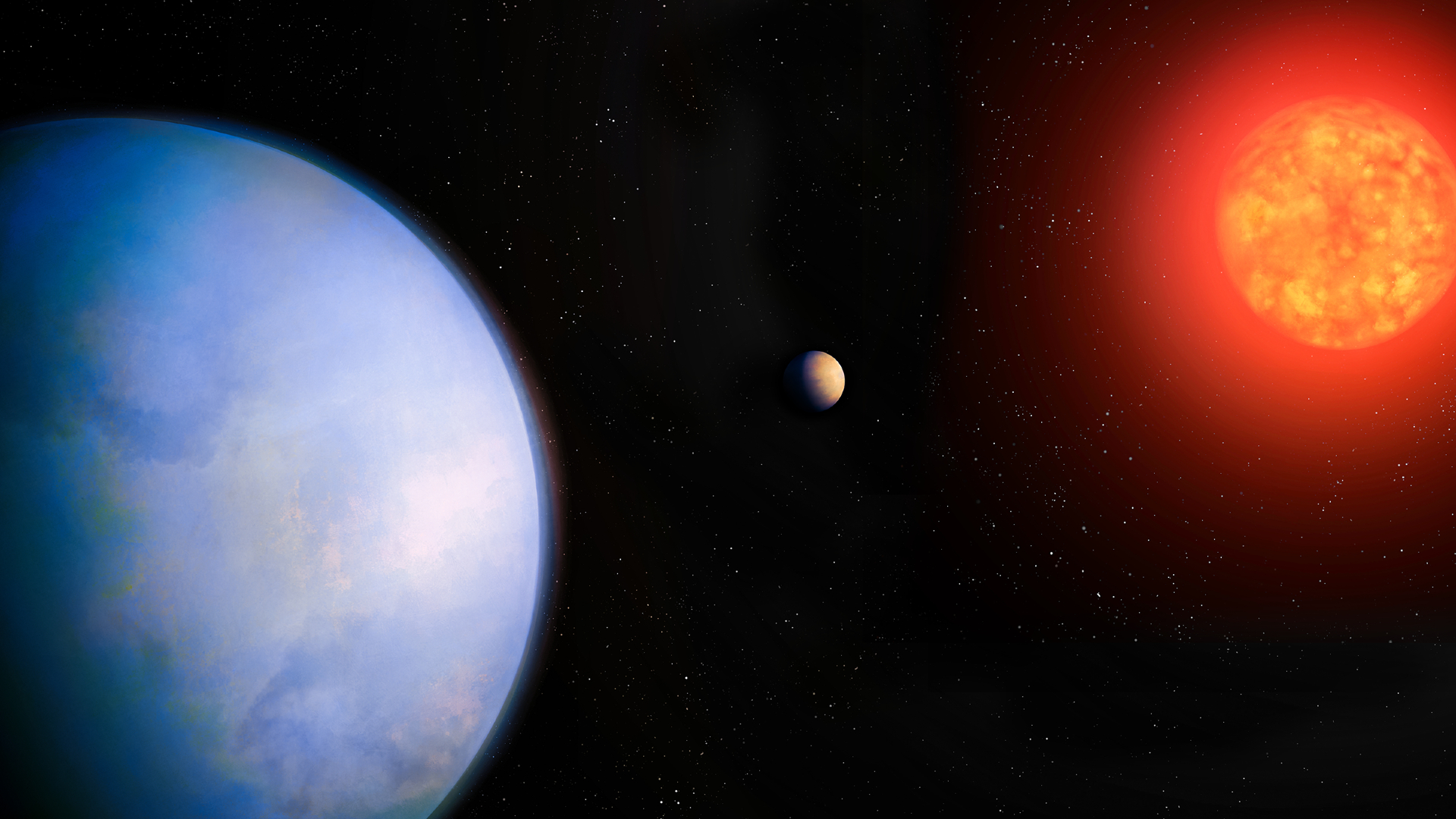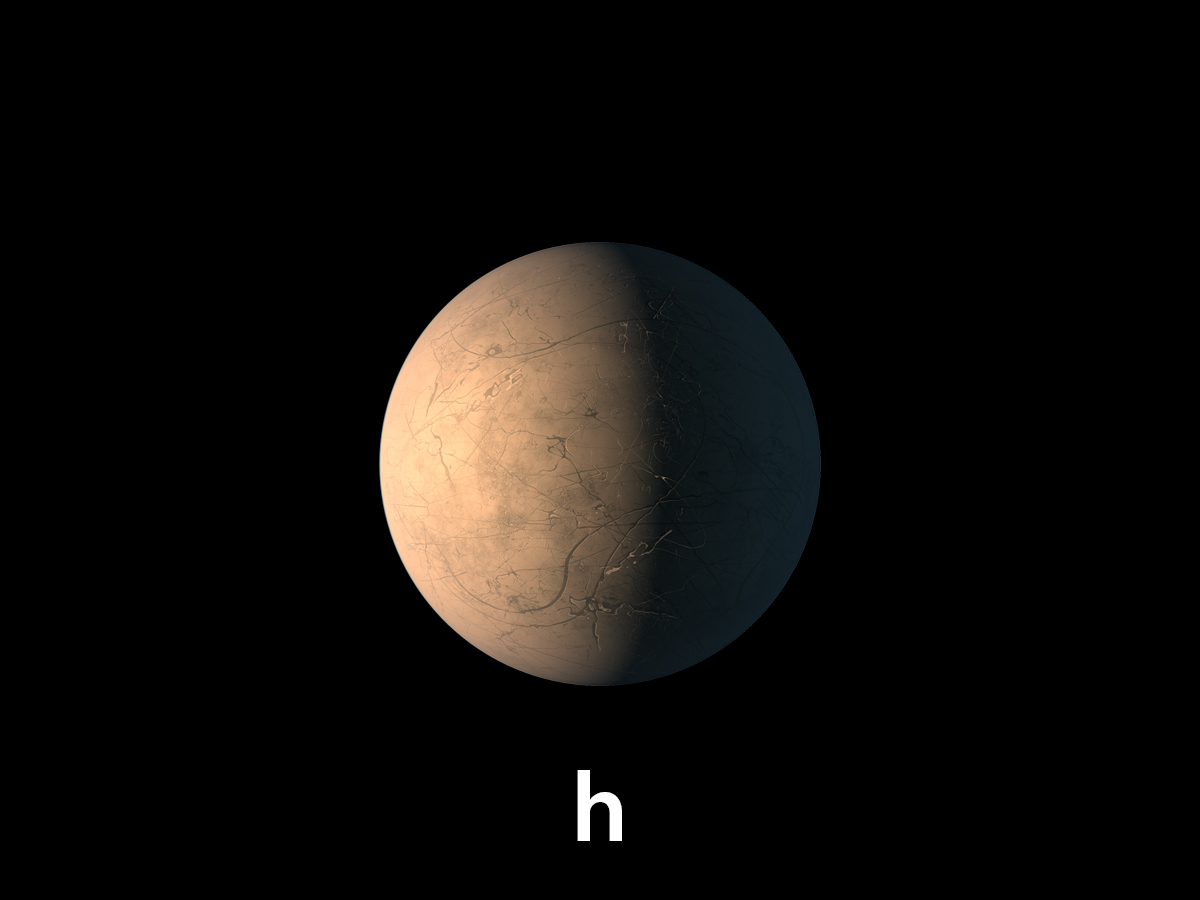Super-Earth less than 20 light-years away is an exciting lead in the search for life
The newly discovered world is called GJ 251c and it is a super-Earth orbiting a red dwarf star less than 20 light-years away.

A super-Earth exoplanet in the habitable zone of its star has been detected less than 20 light-years away, putting it near the top of the list for best places to look for life beyond our solar system.
The planet, known as GJ 251c, orbits a red dwarf star 18.2 light-years away in the constellation of Gemini, the Twins. The planet's mass is four times greater than that of Earth, making it a 'super-Earth' — a rocky planet larger and more massive than our own.
"While we can't yet confirm the presence of an atmosphere or life on GJ 251c, the planet represents a promising target for future exploration," said Suvrath Mahadevan, who is a professor of astronomy at Penn State University, said in a statement.
In the habitable zone, sometimes referred to as the Goldilocks zone, conditions are just right for liquid water to exist on the surface of a planet with an appropriate atmosphere.
GJ 251c was discovered thanks to observations spanning over 20 years, during which scientists looked for a slight wobble of the world's parent star incurred by the planet's gravity. As the star wobbles ever so slightly toward and away from us, we see a Doppler shift in its radial velocity that can be measured with a spectrograph.
One other planet is known to exist in the system, GJ 251b, which was discovered in 2020 and orbits its star every 14 days at a distance of 7.6 million miles (12.2 million kilometers). Using archive data from telescopes worldwide, a team of astronomers, including Mahadevan, was able to refine the accuracy of the radial velocity measurements for planet GJ 251b
The team then combined this refined data with brand new, high-precision observations from the Habitable-Zone Planet Finder (HPF), which is a near-infrared spectrograph on the Hobby-Eberly Telescope at McDonald Observatory in Texas. This revealed a second planetary signal belonging to a four-Earth-mass world orbiting the star every 54 days. That was then confirmed by measurements with the NEID spectrograph on the 3.5-meter WIYN telescope at Kitt Peak National Observatory in Arizona.
Breaking space news, the latest updates on rocket launches, skywatching events and more!
Though it may sound straightforward, in reality, the challenge of detecting the planet was formidable.
Stars are constantly roiling and churning as convective bubbles burst through to their visible surfaces and prominences splutter into space. This creates a noisy background of what's called asteroseismic activity that manifests as Doppler shifted lines in the star's spectrum. Picking out the Doppler shifted radial velocity signals from this noise is tricky, requiring a great deal of modeling what a planetary signal should look like.
"This is a hard game in terms of trying to beat down stellar activity as well as measuring its subtle signals, teasing out slight signals from what is essentially this frothing, magnetospheric cauldron of a star-surface," said Mahadevan.
Now that we know about the planet, astronomers can plan future observations.
GJ 251c is probably a little bit too far away from its star for the James Webb Space Telescope (JWST) to search for signs of an atmosphere around it. The next generation of 30-meter-class telescopes might be able to detect the planet's atmosphere via a method of searching for light reflected off its surface or atmosphere, but it will likely require the Habitable Worlds Observatory, which is a planned giant space telescope that is hoped to launch in the 2040s, to fully characterize GJ 251c.
"We are at the cutting edge of technology and analysis with this system," said Corey Beard of the University of California, Irvine, who participated in the research. "We need the next generation of telescopes to directly image this candidate."
Although GJ 251c is described by Mahadevan as being "one of the best candidates in the search for an atmospheric signature of life," referencing how we will search for biosignatures in the planet's atmosphere, there remains an elephant in the room: its star.
At 36% of the mass of our sun, the star GJ 251 is a red dwarf. Astronomers have now found numerous rocky planets in the habitable zone of red dwarfs, including Proxima Centauri b, TRAPPIST-1e and f, and Teegarden's Star b. However, red dwarfs are notorious for having violent tempers that bely their diminutive stature, releasing regular powerful flares that can over time strip a planet of its atmosphere. For example, the JWST's observations of the inner three planets of TRAPPIST-1 find no evidence for an atmosphere, while its observations of the fourth planet, e, are so far inconclusive. Some astronomers are now growing skeptical that Earth-like worlds can thrive around red dwarfs.
What GJ 251c has going for it is that it is slightly farther away from its star than habitable zone planets found around other red dwarfs are. This is thanks to its star being a little more massive than those other stars and therefore hotter, pushing the habitable zone farther out. It is possible that GJ 251c is far enough away from its star to have avoided the worst of its temper tantrums, and, if armed with a thick atmosphere and strong planetary magnetic field, it could have resisted the star's stellar wind from stripping its atmosphere away.
However, at present, this remains guesswork. "We made an exciting discovery," said Mahadevan, "But there’s still much more to learn about this planet."
The findings were reported on Oct. 23 in The Astronomical Journal.

Keith Cooper is a freelance science journalist and editor in the United Kingdom, and has a degree in physics and astrophysics from the University of Manchester. He's the author of "The Contact Paradox: Challenging Our Assumptions in the Search for Extraterrestrial Intelligence" (Bloomsbury Sigma, 2020) and has written articles on astronomy, space, physics and astrobiology for a multitude of magazines and websites.
You must confirm your public display name before commenting
Please logout and then login again, you will then be prompted to enter your display name.

